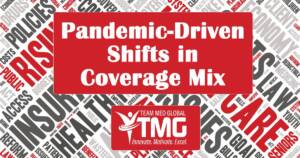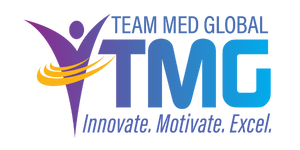 The pandemic didn’t just disrupt clinical care—it reshaped the entire healthcare landscape in ways that continue to influence operations today. One of the most lasting shifts? The coverage mix. As patients moved between private insurance, Medicaid, Medicare, and exchange-based plans, provider networks and reimbursement structures adapted rapidly. For Provider Lifecycle Professionals (PLPs), these changes have had lasting implications across licensing, enrollment, and provider participation.
The pandemic didn’t just disrupt clinical care—it reshaped the entire healthcare landscape in ways that continue to influence operations today. One of the most lasting shifts? The coverage mix. As patients moved between private insurance, Medicaid, Medicare, and exchange-based plans, provider networks and reimbursement structures adapted rapidly. For Provider Lifecycle Professionals (PLPs), these changes have had lasting implications across licensing, enrollment, and provider participation.
Understanding how these pandemic-driven shifts affect the provider lifecycle isn’t just helpful—it’s essential.
What Is a Coverage Mix—and Why It Matters Now
Coverage mix refers to the breakdown of insurance coverage types among a patient population. This includes commercial plans, Medicare, Medicaid, and self-pay/uninsured patients. During the pandemic, many individuals lost employer-sponsored insurance and enrolled in Medicaid or marketplace plans. Those shifts haven’t fully reversed, and payers continue to respond by realigning networks and reimbursement models.
PLPs are on the front lines of this transition, ensuring that licensed providers are properly enrolled and positioned to serve the right populations under the right plans.
Licensing Demands Are Evolving
The rapid expansion of telehealth and multi-state practice needs during the pandemic triggered a new wave of licensing complexity. While some emergency flexibilities have expired, patient demand for remote care and cross-state access hasn’t slowed down.
PLPs managing licensing workflows now face:
- A rise in multi-state license requests
- Compact participation and eligibility tracking
- New scrutiny around telehealth-specific licensure requirements
Proactively managing these evolving demands helps providers stay compliant and accessible.
Enrollment Shifts: New Plans, New Priorities
As coverage patterns shift, payers are reassessing which providers are included in their networks and under what terms. PLPs must now navigate:
- More frequent revalidations and audits
- Changes to participation criteria or network status
- Increased urgency in aligning licensing and enrollment timelines
The pressure is on to reduce delays, ensure accuracy, and maintain payer relationships. Having strong internal coordination between enrollment and licensing teams can make or break your turnaround time.
What PLPs Can Do Right Now
These pandemic-driven shifts aren’t temporary. They’ve redefined how providers enter and stay in the system. PLPs can meet the moment by:
- Staying informed about regulatory updates and payer network changes
- Anticipating licensing or enrollment needs based on population and coverage trends
- Building strong relationships with providers to proactively flag potential gaps
- Collaborating across departments to ensure the full provider lifecycle stays aligned
When PLPs stay ahead of the curve, providers stay visible, accessible, and reimbursable.
Your Expertise Matters More Than Ever
The pandemic may no longer be the headline, but its ripple effects are still shaping the work of every PLP. Licensing, credentialing, and enrollment are no longer siloed tasks—they are interconnected, high-impact functions that directly influence patient access and organizational success.
At TMG, we believe PLPs are essential to navigating this new normal. Stay sharp, stay agile, and explore continuing education opportunities at TMG University to stay ahead of the next wave of change.

